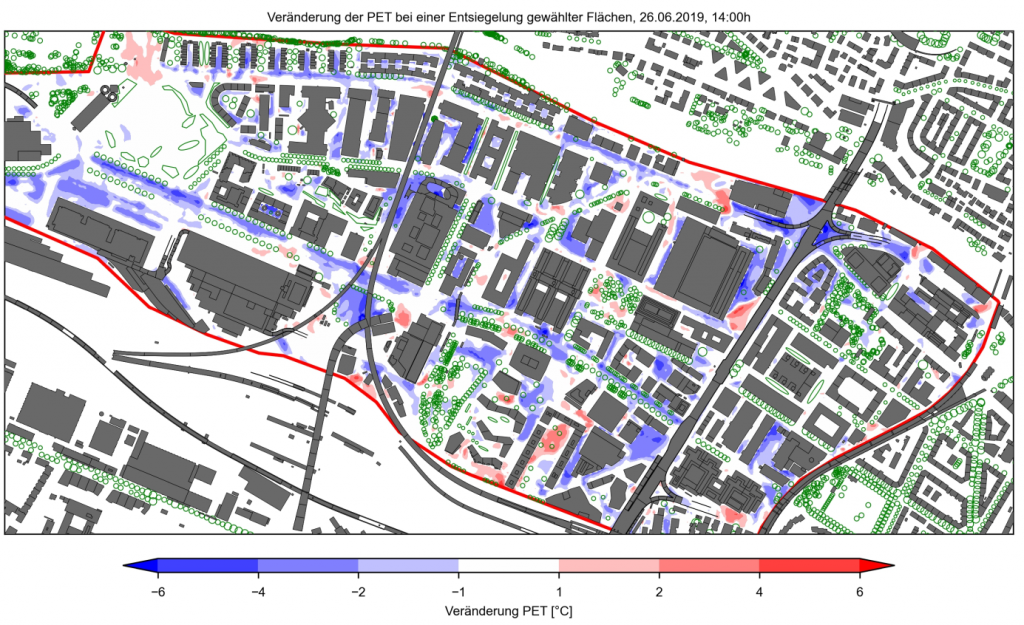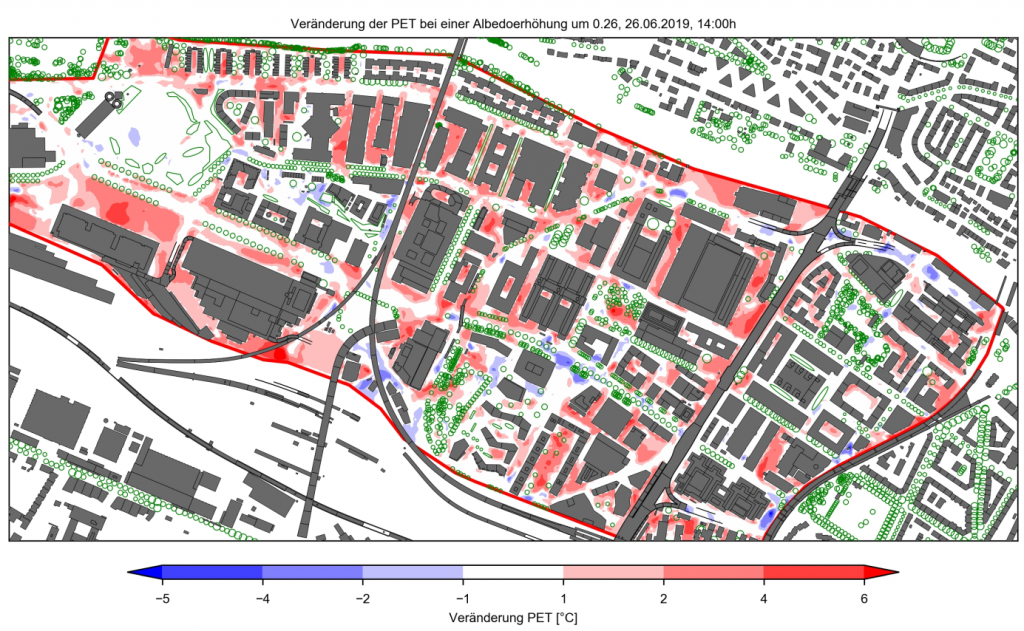Navigation menu
- Education
- Emissions & Air Quality
- Infrastructure & Services
- Meteorology & Climate
- News
- Physical Chemistry
- Projects
- The Team
As you saw in the last blogpost, our group is maintaining a high resolution temperature and humidity monitoring network in the city of Zurich. Some of the stations are also located in the district of Zurich West, which is located just north of the railroad tracks running towards the main station. Zurich West is quite special in a sense that it consists of mostly built-up areas. Most of the district is made up by impervious surfaces, which all contribute overproportionnaly to the urban heat island effect. We were approached by the City of Zurich regarding urban climate simulations of Zurich West, with the goal to find out how heat stress indices would change if certain mitigation actions were taken in this particular area. The goal was to present some results in the architecture magazine “Hochparterre”, for which the simulations had to be ready within a relatively short time frame. We gladly accepted the challenge.
We went on to simulate the changes e.g. in the physiological equivalent temperatures (PET), which is an index for thermal comfort for an individual. Looking at the results for the PET, we can indeed say that it was hot on the simulated day (26.06.2019, 14:00h). Thermal stress reaches a very high level, which is plausible given that the simulated day lies within one of the heat waves of 2019.

The mitigation actions that were then implemented in the simulations on a large scale were i) an implementation of green roofs, ii) increasing albedo values of surfaces and facades, iii) the de-sealing of impervious surfaces to grass/gravel mix or just grass and iv) a combination of the above.
The results we got were most interesting. From the results of the simulations we could see that the de-sealing of surfaces seems to decrease PET the most (up to -4 to -6°) out of the simulated options.

What is very interesting though is the change when surfaces are made brighter, i.e. the albedo value of surfaces is increased. The results show a remarkable increase in PET values during the day when increasing surface albedos. This equates to an increase in thermal stress, so a decrease in thermal comfort for pedestrians walking in the area during that time.

This is quite counterintuitive – one would expect temperatures to drop when making things more bright! When looking only at the simulated air temperature values, the latter can be confirmed: Air temperature actually decreases in this scenario. So how can we reconcile the decreasing air temperature and the increase in heat stress? The cause for this effect can be found in the change of radiation fluxes: When increasing the albedo values of a surface, less shortwave radiation is absorbed, which leads to lower surface and lower air temperatures. However, this also means that much more radiation is reflected and irradiates pedestrians, who effectively will be fried from above, by the sun, and also a bit from below, by the reflected radiation from the soil. In the end, the decrease in longwave radiation due to the decrease in surface temperature is not enough to offset the increase in reflected shortwave radiation during the day, leading to the increase in thermal stress for the public. This mechanism is supported by various studies. During the night though, when the solar radiation is no longer a factor, the decreased surface temperatures lead to a decrease in air temperature, and thus also to a decrease in PET during the night.
So what does that all mean in the end? It clearly tells us that mitigation actions do not always act in an intuitive way, given the results of the albedo change. With the skills we developed in our team, we are able to simulate these effects. Combining this ability with the measurements mentioned in the beginning, we can combine the relevant topics required for successful urban climate research, and continue the quest of trying to improve our future lives in cities.